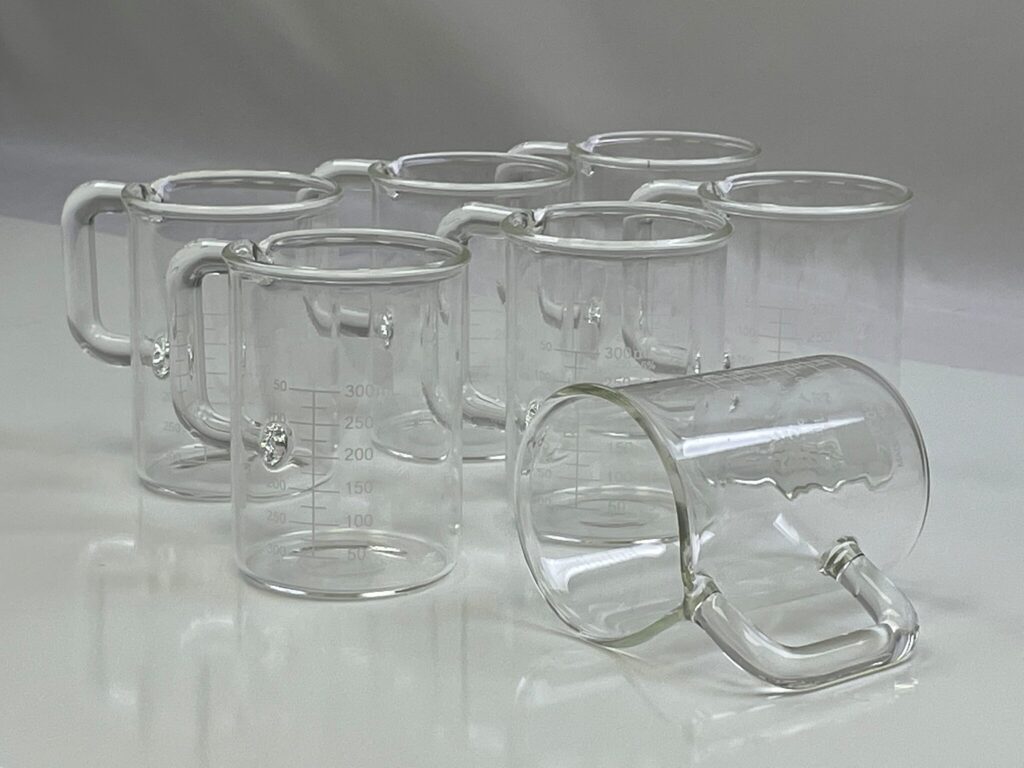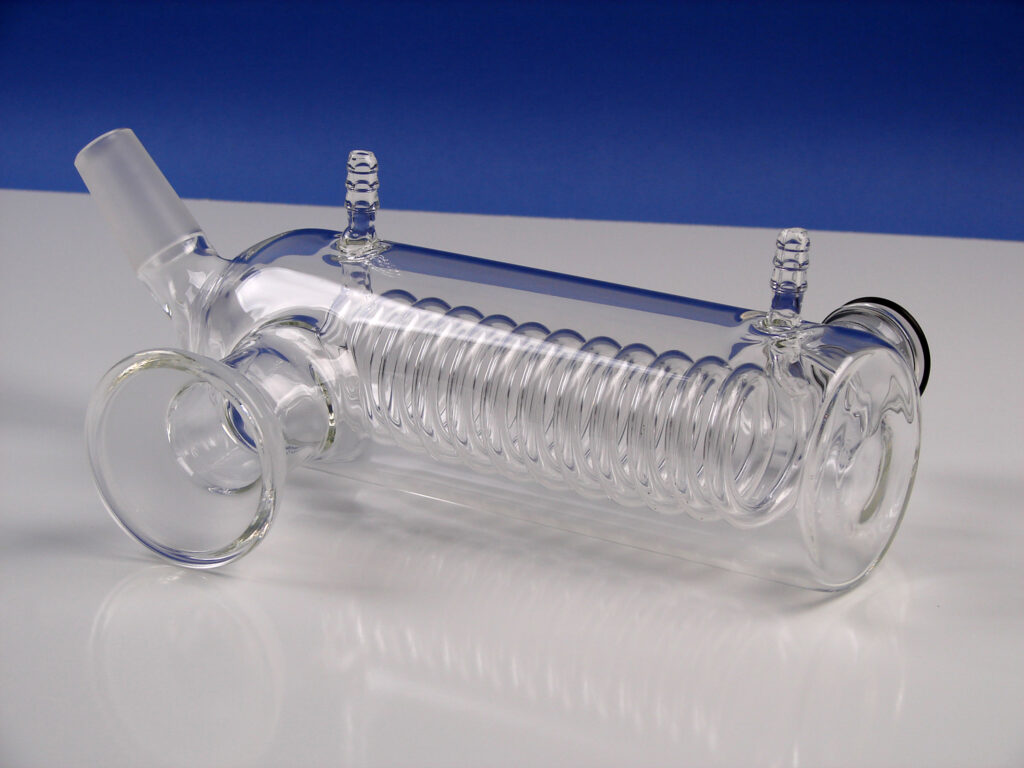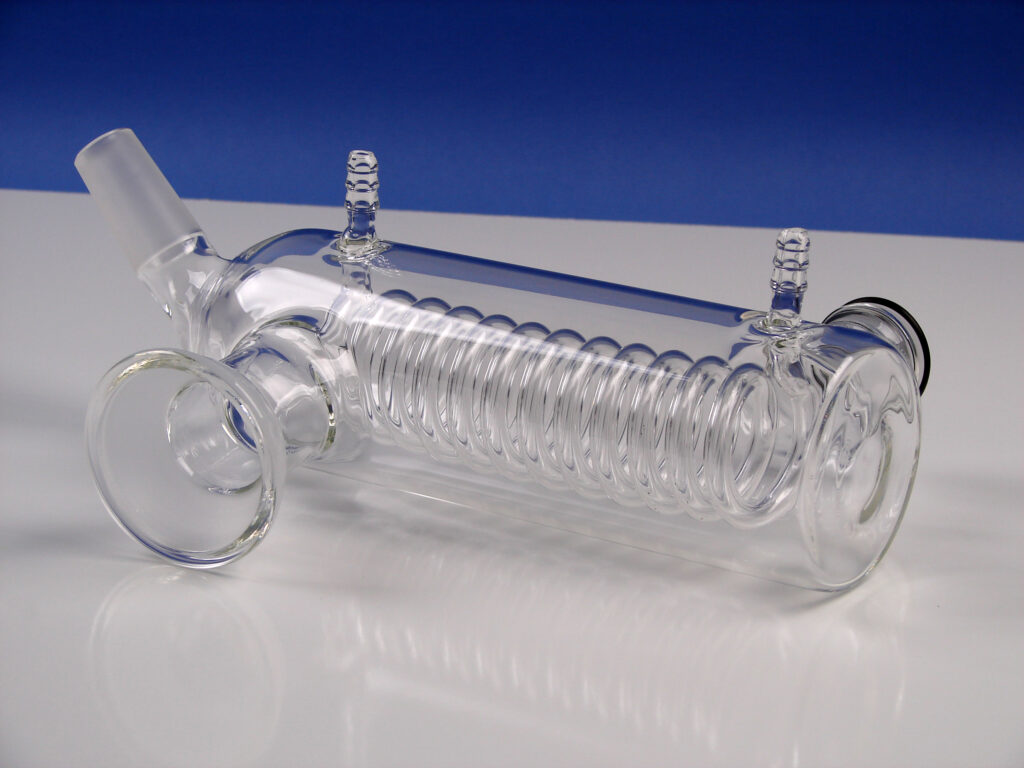The two primary types of glass used for scientific applications are borosilicate and quartz glass. Borosilicate glass has a reputation for thermal and chemical resistance. You may be most familiar with the form known as Pyrex. Quartz, also known as fused silica, is the second most commonly used glass type in scientific applications. That is because it tolerates extremely high temperatures and a wide range of electromagnetic spectra.
Soda-lime glass is also commonly used in scientific applications, but is a less resistant type of scientific glass. It is mostly used for general storage and consumer products. Other important specialized types of scientific glass include fritted glass, which is porous for filtration, and silanized glass, which is non-stick for organic materials.

What are the Types of Scientific Glass and Their Unique Properties?
- Borosilicate Glass: This is the most common type of lab glass, distinguished by its excellent resistance to thermal shock and chemical corrosion from acids, salts, and organic solvents. It’s perfect for heating and general labware.
- Quartz Glass (Fused Silica): Made from almost pure silica, this glass can withstand very high temperatures. It is also transparent to certain parts of the electromagnetic spectrum, making it ideal for specific optical applications.
- Suprasil: This is a type of quartz glass that has been purified and refined. It has higher purity, lower impurities, and lower fluorescence than regular quartz glass. Therefore, Suprasil is suitable for laboratory applications that involve high-precision optical measurements or spectroscopy.
- Cerium-Doped Quartz: This type of quartz glass contains cerium oxide to give it a higher resistance to solarization, which is the degradation of optical properties due to exposure to ultraviolet light. In this case, it is suitable for laboratory applications that involve long-term exposure to ultraviolet light or high-energy radiation.
- Precision ID/OD Tubing and Rod: These are tubes and rods of borosilicate glass, quartz glass, or other materials that have precise inner and outer diameters. As such, they are suitable for laboratory applications that involve fluid flow, pressure, or vacuum.
- Soda-Lime Glass: A more economical glass, it is less chemically resistant than borosilicate. It is generally effective for storing dry samples or non-aggressive liquids, as well as for general consumer products.
- Actinic Glass: This is a brown, light-absorbing glass d esigned to protect sensitive samples from UV radiation.
- Silanized Glass: This is standard glass that has been treated to make its surface non-stick. It is used to prevent organic materials from adhering to the glass, ensuring more accurate measurements and easier cleaning.
- Fritted Glass: A type of glass that has a porous filter built into it, allowing gases or liquids to pass through while retaining solids.
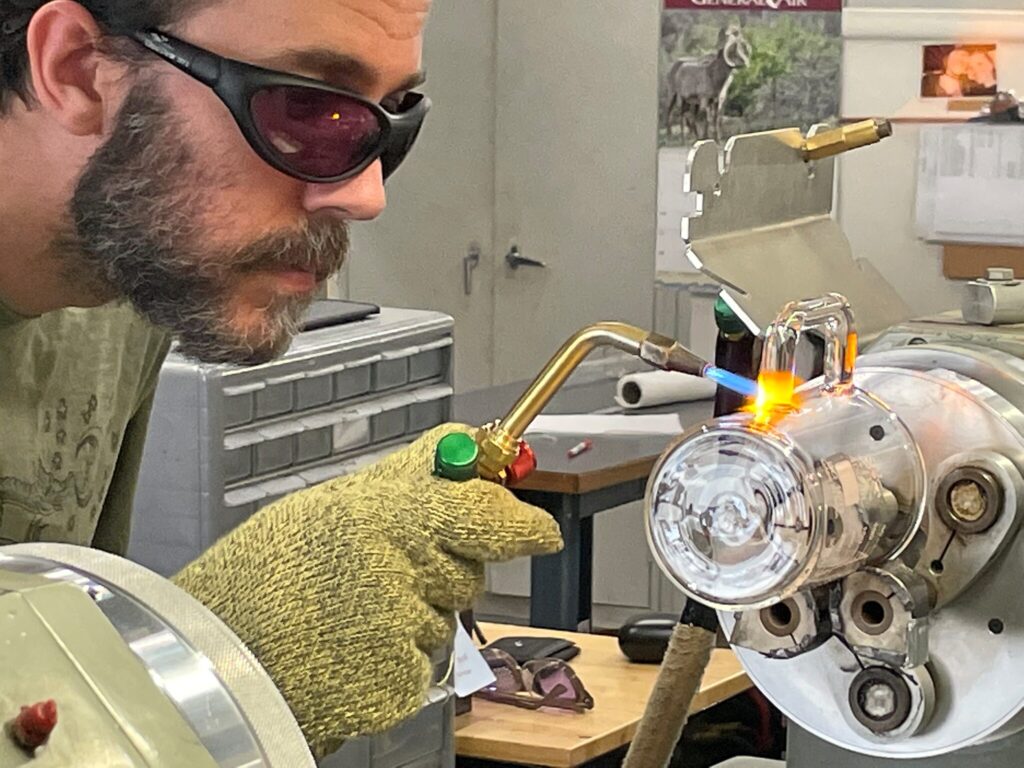
What are the Common Types of Laboratory Glassware?
Common laboratory glassware types fall into three primary categories–containers, measuring and dispensing, and special purpose. These include beakers for holding and mixing, and flasks, such as Erlenmeyer, volumetric, and round-bottom, for mixing, heating, and storing. Pipettes and burettes are for precise liquid measurement, graduated cylinders for accurate volume measurement, and test tubes for holding and observing samples. Other important types are Petri dishes for culturing, desiccators for drying, and funnels for transferring. Specialized products, such as those for quantum mechanics, include atom traps, and hundreds of products specifically for Inductively Coupled Plasma or ICP.
Containers
- Beakers: Cylindrical containers with flat bottoms for holding, heating, and mixing liquids.
- Erlenmeyer Flasks (Conical Flasks): These have a flat bottom, conical body, and narrow neck. They are ideal for mixing and reducing evaporation.
- Volumetric Flasks: Designed for precise liquid measurement and preparing standard solutions.
- Round-Bottom Flasks: These are often beneficial in heating and boiling. One characteristic feature is a rounded base.
- Test Tubes: Small, cylindrical tubes for small-scale reactions, sample storage, and observation.
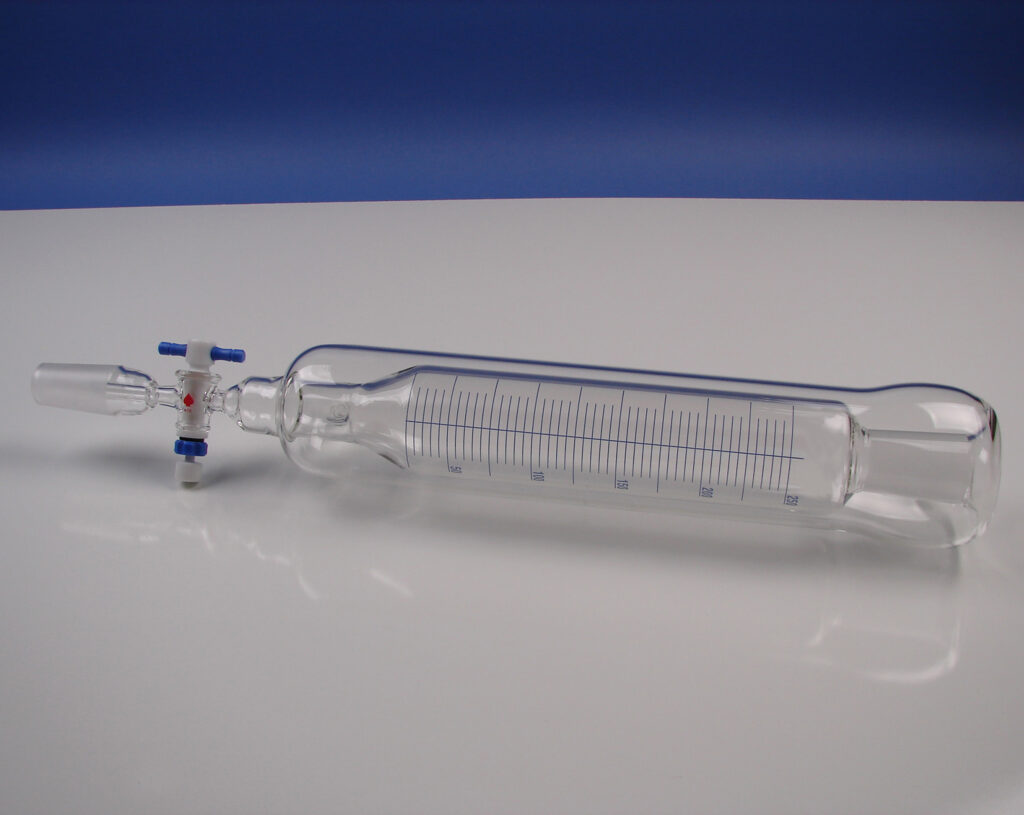
Measuring and Dispensing Glassware
- Graduated Cylinders: Tall, narrow containers with volume markings for accurate liquid measurements.
- Pipettes: Narrow tubes for transferring small, measured volumes of liquid.
- Burettes: Long, graduated glass tubes with a stopcock at the bottom for dispensing variable amounts of liquid.
Specialized Glassware
- Petri Dishes: Shallow, round dishes for culturing cells and microorganisms.
- Desiccators: Sealed containers to keep samples dry and remove moisture.
- Funnels: Used to channel liquids or powders into containers with narrow openings, or for filtration.
- Condensers: Designed to cool hot vapors into liquids, commonly in distillation setups.
- Slides: Thin, flat pieces of glass that hold specimens for viewing under a microscope.
- Capillary tubes: These help determine packed cell volume, with or without an anticoagulant to prevent blood from clotting.
The Special Focus of Precision Glassblowing
Precision Glassblowing features an online shop of more than 1,800 products as well as a custom product development practice for laboratory glassware. Custom, non-standard laboratory glassware manufacturing is a fulfilling and satisfying process.
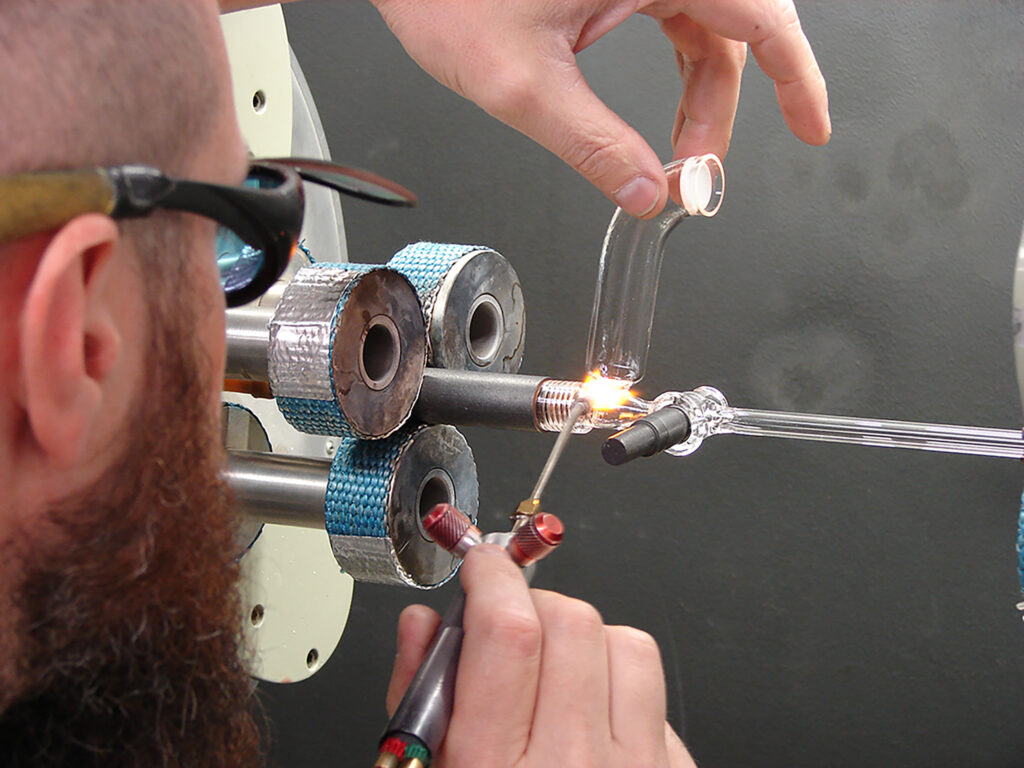
That is because it provides the client with:
- Accuracy: Custom laboratory glassware fits very precise specifications. This ensures the glassware is accurate and reliable.
- Durability: Custom laboratory glassware begins with strong, durable materials. This makes it a desirable choice for applications where the glassware is subject to harsh conditions.
- Customization: Custom laboratory glassware can be customized to meet the specific needs of a particular laboratory or research project. This allows for the optimal design and performance of the glassware.
- Safety: The design of custom laboratory glassware meets specific safety requirements. This helps reduce the risk of accidents and injuries.
- Distinctiveness: Custom design produces high-quality, custom glassware products.
- Agile: Doing custom work allows for non-standard planning. Proper planning and repeat orders achieve fast, flexible delivery times.
- Attractive ROI: Working with a specific contractor to produce custom work also allows you to negotiate competitive, reasonable prices and terms that suit both parties.
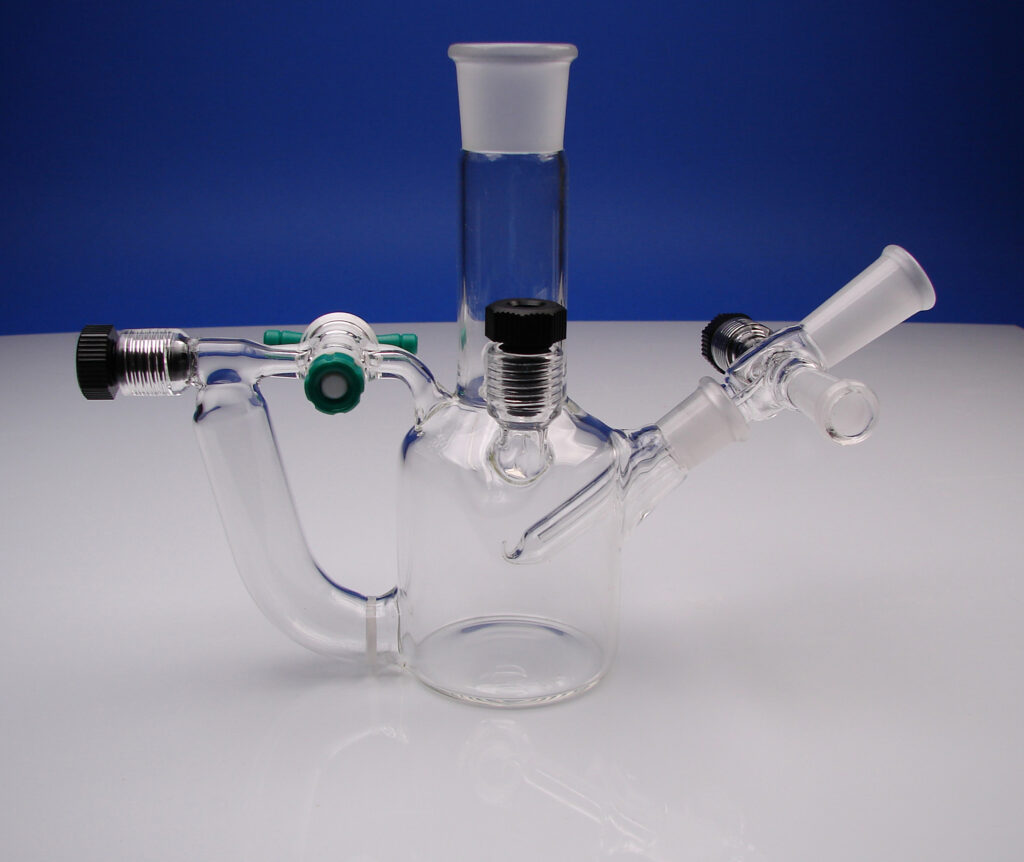
Are You Exploring Glass Types for Scientific Application? Let One of Our Experts Help
Do you have questions? Visit our FAQs or Technical Information. And, there are several ways to contact Precision Glassblowing. Click here to pick one that works for you.
